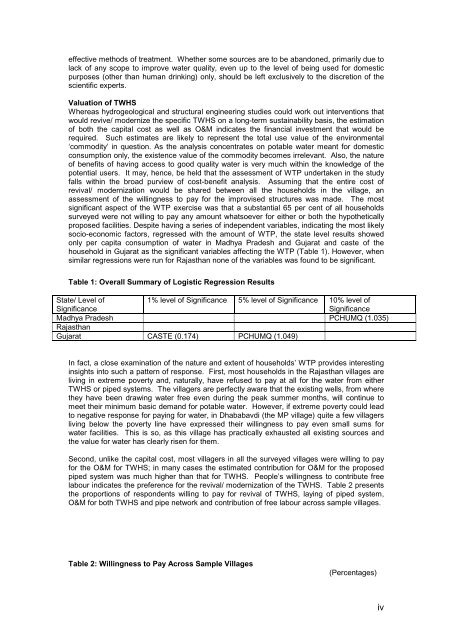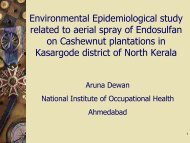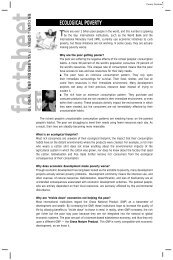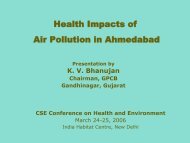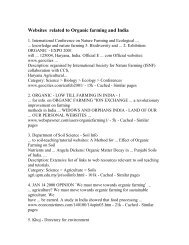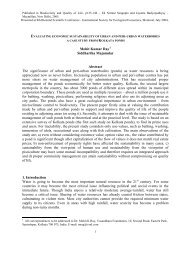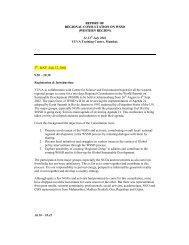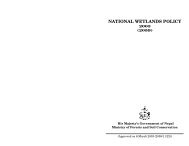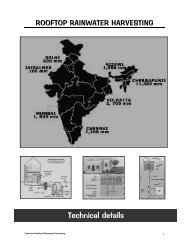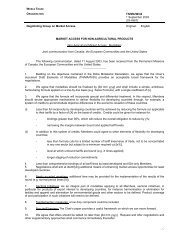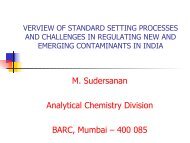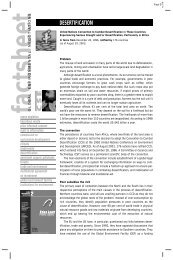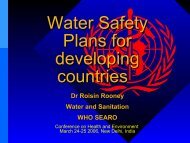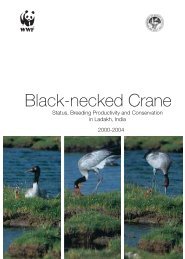Reviving a Water Heritage: - Rainwater Harvesting
Reviving a Water Heritage: - Rainwater Harvesting
Reviving a Water Heritage: - Rainwater Harvesting
You also want an ePaper? Increase the reach of your titles
YUMPU automatically turns print PDFs into web optimized ePapers that Google loves.
effective methods of treatment. Whether some sources are to be abandoned, primarily due to<br />
lack of any scope to improve water quality, even up to the level of being used for domestic<br />
purposes (other than human drinking) only, should be left exclusively to the discretion of the<br />
scientific experts.<br />
Valuation of TWHS<br />
Whereas hydrogeological and structural engineering studies could work out interventions that<br />
would revive/ modernize the specific TWHS on a long-term sustainability basis, the estimation<br />
of both the capital cost as well as O&M indicates the financial investment that would be<br />
required. Such estimates are likely to represent the total use value of the environmental<br />
‘commodity’ in question. As the analysis concentrates on potable water meant for domestic<br />
consumption only, the existence value of the commodity becomes irrelevant. Also, the nature<br />
of benefits of having access to good quality water is very much within the knowledge of the<br />
potential users. It may, hence, be held that the assessment of WTP undertaken in the study<br />
falls within the broad purview of cost-benefit analysis. Assuming that the entire cost of<br />
revival/ modernization would be shared between all the households in the village, an<br />
assessment of the willingness to pay for the improvised structures was made. The most<br />
significant aspect of the WTP exercise was that a substantial 65 per cent of all households<br />
surveyed were not willing to pay any amount whatsoever for either or both the hypothetically<br />
proposed facilities. Despite having a series of independent variables, indicating the most likely<br />
socio-economic factors, regressed with the amount of WTP, the state level results showed<br />
only per capita consumption of water in Madhya Pradesh and Gujarat and caste of the<br />
household in Gujarat as the significant variables affecting the WTP (Table 1). However, when<br />
similar regressions were run for Rajasthan none of the variables was found to be significant.<br />
Table 1: Overall Summary of Logistic Regression Results<br />
State/ Level of<br />
Significance<br />
1% level of Significance 5% level of Significance 10% level of<br />
Significance<br />
Madhya Pradesh PCHUMQ (1.035)<br />
Rajasthan<br />
Gujarat CASTE (0.174) PCHUMQ (1.049)<br />
In fact, a close examination of the nature and extent of households’ WTP provides interesting<br />
insights into such a pattern of response. First, most households in the Rajasthan villages are<br />
living in extreme poverty and, naturally, have refused to pay at all for the water from either<br />
TWHS or piped systems. The villagers are perfectly aware that the existing wells, from where<br />
they have been drawing water free even during the peak summer months, will continue to<br />
meet their minimum basic demand for potable water. However, if extreme poverty could lead<br />
to negative response for paying for water, in Dhababavdi (the MP village) quite a few villagers<br />
living below the poverty line have expressed their willingness to pay even small sums for<br />
water facilities. This is so, as this village has practically exhausted all existing sources and<br />
the value for water has clearly risen for them.<br />
Second, unlike the capital cost, most villagers in all the surveyed villages were willing to pay<br />
for the O&M for TWHS; in many cases the estimated contribution for O&M for the proposed<br />
piped system was much higher than that for TWHS. People’s willingness to contribute free<br />
labour indicates the preference for the revival/ modernization of the TWHS. Table 2 presents<br />
the proportions of respondents willing to pay for revival of TWHS, laying of piped system,<br />
O&M for both TWHS and pipe network and contribution of free labour across sample villages.<br />
Table 2: Willingness to Pay Across Sample Villages<br />
(Percentages)<br />
iv


